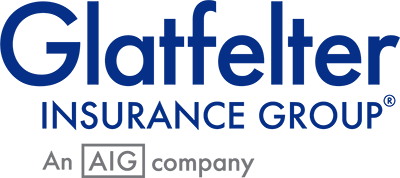Work better and faster with these tips to avoid distractions
“Always remember, your focus determines your reality.” – George Lucas
INTERRUPTIONS ARE EXPENSIVE
Our day-to-day lives are filled with distractions, often especially at our places of work. Possessing focus at work has become an increasingly difficult task, and a lack of focus can prove to be incredibly costly for an employee and their company. According to Basex, “unnecessary interruptions” (and therefore loss of focus) have cost U.S. businesses a whopping $588 billion per year.
You have important professional goals. When your mind becomes distracted by interruptions, however, your productivity and ability to successfully attain those goals is inevitably delayed. To be at your best, it has become more critical than ever to learn how to tune out daily disturbances.
STUDIES SHINE A LIGHT ON THE PROBLEM
Research from the University of California, Irvine, and Gloria Mark found that the average office worker is able to spend just 11 minutes on any given task before being interrupted or abandoning that task for another project. In addition, she noted that after workflow had been disrupted for an individual, it can require approximately 23 minutes for them to regain focus. With all of these distractions, how do we work to tune things out so that we are able to better tune in?
Proceedings of the National Academy of Sciences of the United States of America published a notable study on the subject of attention. They noted that there are two main ways to respond to interruptions, stating: “Imagine that you take a call on your phone while the television loudly plays in the background. To make it easier to hear the caller, you can either turn up the volume on your phone (target enhancement) or you can turn down the volume on the television (distractor suppression). In the end, either approach leads to the same result: you hear the phone call better.”
In order to reap the most focus benefits, we recommend a mixture of both target enhancement and distractor suppression. Here are a few tips for how to do each within your workspace:
Distractor Suppression:
- Tame technology use - Make a conscious effort to forward office phones and/or leave cell phones out of important meetings where additional focus may be needed.
- Turn up the tunes - In a noisy, open-office environment, consider playing soft music or white noise, or wearing headphones. Avoid playing your favorite tunes (the ones that make you want to sing along,) and instead find background music that is supposed to boost productivity—a quick search for “focus music” will lead you in the right direction.
- Let others know you’re busy - If you have an office where you’re able to close your door and put up a “do not disturb” sign, use it—often.
- Take a stand, literally - Stand up instead of remaining seated when you get unplanned visitors. This makes spontaneous conversations happen more rapidly, and gives a visual reminder that you’ve stepped away from your work.
Target Enhancement:
- Schedule down time - It may sound completely counter-intuitive, but if you want to focus on something, make sure to give your brain a break beforehand. Consciously scheduling some time to completely tune-out will make your focus much stronger when you return to work.
- Stop multi-tasking during important work - Experts say that an effort to single-task actually improves focus and makes you smarter. According to one article from Forbes, focusing on a single task at a time is possible (and encouraged) for even the most adept multi-taskers. They state: “Consistent single-tasking helps ensure that your decision making skills last late into your senior years,” and that “…the biggest predictor of a sound decision-maker was a high capacity for strategic attention, the ability to filter the most important information from less relevant data.”
- Practice perfect focus - A consistent commitment to training your brain for better focus can pay off exponentially. Seek out spaces that offer uninterrupted time when you have important items to attend to. In addition, while in these quiet spaces, don’t be afraid to give yourself tentative project deadlines. Keeping an end-goal in mind when you begin something can help you to place increased importance on staying on task.
- Prepare yourself - Implement a mental check-in before meetings. As each team member arrives, have them check-in by intentionally leaving any other worries at the door, and stating that they are ready to begin the meeting. This gives everyone an opportunity to show that they are actively present. Thrive Global breaks down the check-in exercise in this helpful article.
- Increase EQ – Emotionally connecting to the things that you are discussing or working on will naturally increase your focus on them. These emotional intelligence tips will help you to master that practice while tackling new business projects or meeting prospective clients.
RECLAIM YOUR FOCUS
In today’s world, maintaining focus is not an easy task. Fortunately, however, it is also not impossible. With a bit of regular practice and an active commitment to suppressing distractors and enhancing your targets, you can master this skill. As you grow your focus, you’ll naturally grow other important things as well—like your success, your abilities and your client base.
What helps you focus best? Share your thoughts with us below!
 |
Lindsey is a proud wife and mom with a passion for culture, travel and carbs. When she isn’t planning her next Disney cruise, she’s usually chasing her dogs, hanging with her children or anxiously awaiting another date night with her husband. |

Lindsey Elias, Marketing
As our Marketing Content Manager, Lindsey is passionate about producing quality content. When not at the office or planning her next Disney getaway, she loves hanging with her husband, family and fur babies and indulging in the two c's: carbs & coffee.
DISCLAIMER
The information contained in this blog post is intended for educational purposes only and is not intended to replace expert advice in connection with the topics presented. Glatfelter specifically disclaims any liability for any act or omission by any person or entity in connection with the preparation, use or implementation of plans, principles, concepts or information contained in this publication.
Glatfelter does not make any representation or warranty, expressed or implied, with respect to the results obtained by the use, adherence or implementation of the material contained in this publication. The implementation of the plans, principles, concepts or materials contained in this publication is not a guarantee that you will achieve a certain desired result. It is strongly recommended that you consult with a professional advisor, architect or other expert prior to the implementation of plans, principles, concepts or materials contained in this publication.
This blog post may contain the content of third parties and links to third party websites. Third party content and websites are owned and operated by an independent party over which Glatfelter has no control. Glatfelter makes no representation, warranty, or guarantee as to the accuracy, completeness, timeliness or reliability of any third party content. References to third party services, processes, products, or other information does not constitute or imply any endorsement, sponsorship or recommendation by Glatfelter, unless expressly stated otherwise.
Related posts
From natural disasters to crisis situations, community-focused organizations face unique and dangerous risks during their missions.
Learn to create a memorable client experience from the customer service experts at Trader Joe's.
Being able to remain positive in spite of everything you face could have some truly amazing impacts.






Submit a Comment